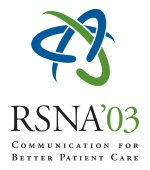Abstract:
HTML
Purpose: Children with sickle cell disease (SCD) are largely unstudied using MRI technology. It is unknown if their altered hemodynamics and the changed shape of their red blood cells and blood viscosity will alter fMRI signal characteristics. Therefore, the main purpose of this study was to determine the feasibility of fMRI in assessing activation of sickle cell children's brain.
Methods and Materials: Subjects (n=7) were 6-14 year old children with SCD (Hemoglobin SS). Subjects performed motor, sensory, and visual tasks in scanner with fMRI and outside the scanner with age-normative neuropsychological testing. Subjects also had blood test of hemoglobin and iron content and had recent measures (less than 1 year) of Transcranial Doppler rates (TCD).
Results: Interim analysis showed a significant activation of anticipated brain areas (precentral gyrus, postcentral gyrus and primary occipital cortex/ Broadmann's areas 3, 4 and 17 corresponding to motor, sensory, and visual tasks, respectively). Each center of activation was within 2 cm of the mean of the group. The fMRI signal intensity as measured by (median and maximum Z, T, and P values per pixel and relative difference between task for activated voxels in the region of interest) did not significantly correlate with hematocrit (range 21.5-31.9%) or hemoglobin S levels (range 54.1-97.3%). The finger-tip number writing task, a test of tactile discernment, correlated with the median (p=0.0002) and maximum Z score values (adjusted for age; p= 0.0191) for the sensory task. The composite of the right and left anterior cerebral, middle cerebral and internal carotid arteries TCD levels correlated with the combination of median Z score for the sensory and motor tasks (p=0.0230).
Conclusion: While the sample size of our study is rather small, we found that brain functional activation is consistent with anticipated anatomical locations in SCD and appears not to be affected by physiologic hematocrit values or levels of hemoglobin S. Unexpectedly, the robust fMRI activation only correlated with one of the neuropsychological tests and not with intelligence or grade level. This underscores the importance of choosing tasks that are similar inside and outside of the scanner. The comparison of fMRI results and TCD in sickle cell patients is interesting and suggests that higher rates of blood flow in the ACA and MCA territory correlate with increased BOLD signal in the cortex supplied by the anterior circulation. Nevertheless, our findings need to be further confirmed with a larger sample size.
Questions about this event email: jackson_hamilton@med.unc.edu
Hamilton, J,
Functional MRI investigation of Pediatric Patients with Sickle Cell Disease. Radiological Society of North America 2003 Scientific Assembly and Annual Meeting, November 30 - December 5, 2003 ,Chicago IL.
http://archive.rsna.org/2003/3108253.html

